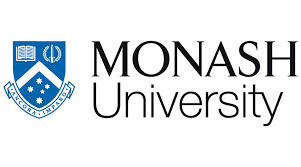Monash University: Monash researchers founding scientists of new GPCR biotechnology company launched with AUD$140 million in financing
Two researchers from the Monash Institute of Pharmaceutical Sciences (MIPS) are amongst the co-founders of an exciting new biotechnology company dedicated to discovering and advancing novel small molecule medicines targeting G protein-coupled receptors (GPCRs).
Professor Arthur Christopoulos, Dean of the Faculty of Pharmacy and Pharmaceutical Sciences, and Professor Patrick Sexton, Director of the ARC Centre for Cryo-electron Microscopy of Membrane Proteins, join Nobel laureate, Professor Robert Lefkowitz, from Duke University, as scientific founders of Septerna Inc., which has attracted US$100 million USD (AUD$140 million) Series A financing. Associate Professor Denise Wootten from MIPS will join the team of Scientific Advisors for Septerna.
The Series A financing was led by Third Rock Ventures with significant support by Samsara BioCapital, BVF Partners, Invus, Catalio Capital Management, Casdin Capital and Logos Capital.
GPCRs are the largest and most diverse family of cell membrane receptors. They have been widely studied as drug targets and are the largest family of proteins targeted by approved drug products. An estimated 700 approved drugs target GPCRs, representing approximately one-third of all currently approved drugs. However, despite the success of GPCRs as a drug class to date, the large majority of potential therapeutic GPCR targets remain undrugged. The complexity and transmembrane nature of GPCRs have made them difficult to isolate outside of the cell and inaccessible to modern small molecule drug discovery approaches.
Septerna has developed a proprietary technology, the GPCR Native ComplexTM Platform, to overcome historic challenges involved in reaching the vast untapped potential of GPCR drug targets for a wide range of diseases. The Native Complex™ platform recapitulates GPCRs with their native structure, function, and dynamics outside of the cellular environment. This enables industrial-scale drug discovery using novel screening technologies and structure-based drug design for the first time.
“Septerna’s truly innovative approach with the Native ComplexTM ushers in a new era of drug discovery to reach previously undruggable GPCRs and enable all modern drug discovery technologies to be fully accessible for the GPCR target class,” said Professor Lefkowitz.
“We are delighted to be on the launchpad for what will be a major step-change for GPCR drug discovery,” said Professor Sexton. “Our teams at MIPS have made deep and impactful advances in understanding novel modes of GPCR drug action, as well as field-leading applications of cryo-electron microscopy to delineating molecular details of GPCR structure and dynamics.”
“The combination of our expertise with the pioneering work of the Lefkowitz laboratory in defining universal mechanisms underpinning GPCR structure, function and regulation brings together decades of innovation for application to a truly novel drug discovery platform,” added Professor Christopoulos. “The depth and breadth of expertise assembled around Septerna is incredible and ensures the ability to span all aspects of GPCR science and pharmacology.”
Monash University President and Vice-Chancellor Professor Margaret Gardner AC said the launch of Septerna demonstrates the tangible impact university research can have on some of the world’s most significant issues.
“Now more than ever, supporting the research capacity and capability of universities is crucial, as this is where some of the greatest advances in our understanding of complex issues takes place, leading to outcomes that will benefit communities around the world,” Professor Gardner said.

